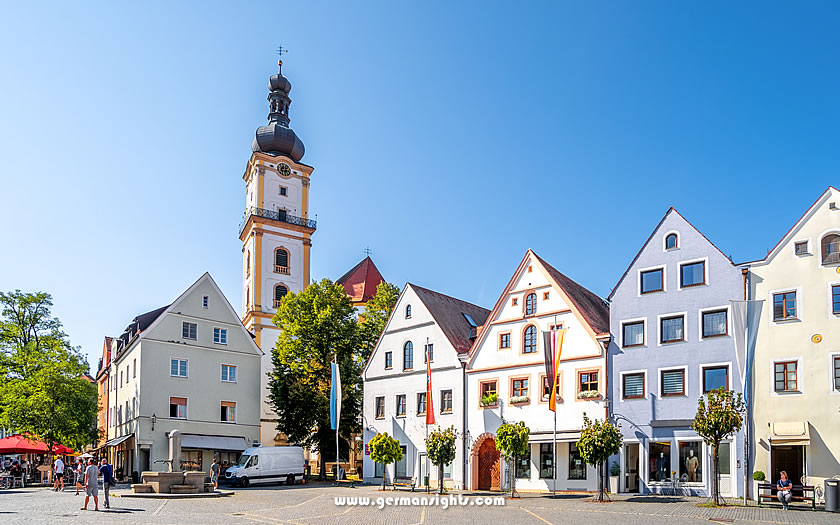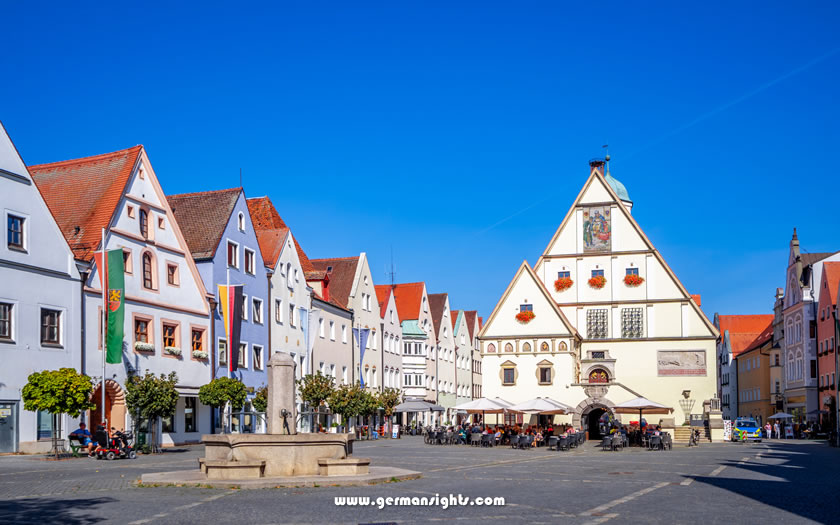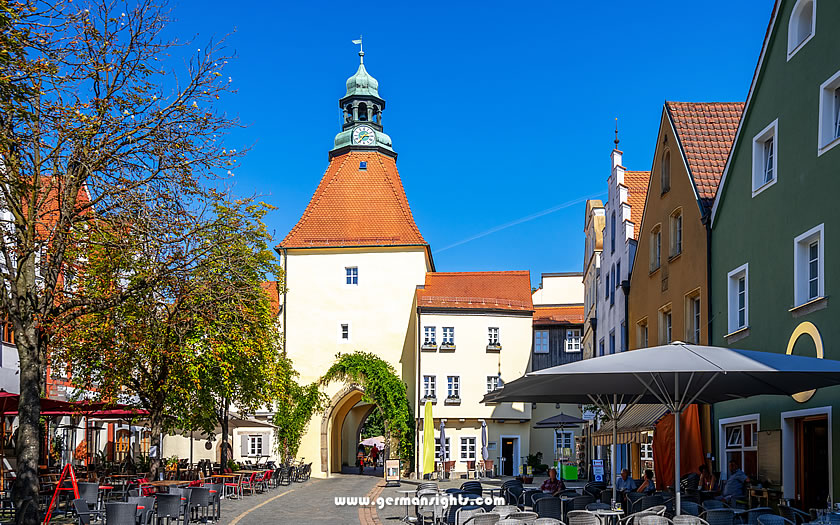Weiden is a medium-sized town in the Upper Palatinate area of Bavaria near the border of Germany with the Czech Republic.
It is located to the east of Nuremberg and to the north of Amberg. It is the second-largest town in the Upper Palatinate region after Regensburg.

The Church of St Michael in Weiden in der Oberpfalz
It is often referred to as 'Weiden in der Oberpfalz" to avoid confusion with the other towns and villages with the same name around Germany. Oberpfalz is the German word for 'Upper Palatinate'.
It is another of the bustling communities in this region with an attractive old town and market square. It is also popular as a starting point for exploring the outdoors, as the town is in the Naturpark Nördlicher Oberpfälzer Wald.
The name might be a bit of a mouthful but essentially it is part of a chain of nature reserves which stretch along the Czech border from the Bavarian Forest to the Thuringian Forest.
The airports at Munich and Nuremberg are the most popular options for those aiming to stay in Weiden.
Distance to Nuremberg Airport: 120km
Distance to Munich Airport: 191km
Distance to Prague Airport: 195km
Albrecht Dürer Airport in Nuremberg is obviously the closest, but offers a limited choice of carriers and destinations. Munich is a big international airport offering a wide range of flights and most visitors arriving by air would use this major airport. Prague is the next closest big airport although it involves crossing national borders and using a different currency.
The train station in Weiden in der Oberpfalz is around a kilometre to the south-west of the old town. There are regular services to Nuremberg, Regensburg, Bayreuth and Munich.
Most of the accommodation in Weiden can be found in the compact old town or just outside what used to be the city walls.
There is another cluster closer to the railway station which are popular for business use.
If you know when you are planning to go but haven't decided on accommodation, then use the map below to get an idea of which properties are available and to compare prices during the period you wish to travel.
Enter your proposed dates and use the '+' to zoom in on a location and reveal more properties. Click on the price above a property to see more information.
(Please note that this selection will also include some guesthouses, pensions and self-catering apartments for those who are interested in that form of accommodation!)
Alternatively, if you would like a list of properties available on your proposed dates of travel, use the search box below to find accommodation:
The extensive Marktplatz, or 'market square', is split into a lower and upper section with the former town hall, the 'Alte Rathaus' in between the two.
The "Oberer Markt" with its beautiful gabled houses dating from the 16th century stretches between the Upper Gate and the Old Town Hall. Between the Old Town Hall and the Lower Gate is the "Lower Market", which serves as the location for the markets held on Wednesdays and Saturdays.

The Alte Rathaus in Weiden in der Oberpfalz
The Alte Rathaus was also constructed in the same era, although it has been extensively renovated over the centuries. A glockenspiel on the facade plays twice a day.
The Church of St Michael is from the Baroque era and is the Protestant parish church. The interior features rococo carvings and the impressive 18th century altarpiece depicts Christ's birth.
The Church of St Joseph is a much newer building and is the Catholic parish church. It is decorated in an unusual Art Nouveau style. There are a number of houses built during the same period at the start of the 20th century with Art Nouveau features (called 'Jugendstil' in German),
Weiden is known for its porcelain and ceramic manufacture and houses the International Ceramic Museum (a branch of Die Neue Sammlung design museum in Munich).
A brochure for a self-guided walking tour of the town centre is available from the tourist office.
Nobody quite knows where the town name Weiden came from. It could either stem from willow trees in the area (a willow tree is a 'Weiden' in German) or as a place where people used to take animals to graze (grazing is also 'weiden' in German).
The town was first mentioned in a legal dispute in 1241. It was located on important trade routes and, despite the usual fires, wars and outbreaks of disease over the centuries, Weiden managed to flourish.

The Lower Gate, part of the historic town fortifications in Weiden
The town was linked to the national railway network in the 19th century and this led to a boom in the population with the establishment of glass and porcelain factories.
Weiden was the site of a prisoner-of-war camp in World War II and was heavily bombed in air raids. A post-war influx of refugees resulted in the population growing even further.
Economic growth continued during peacetime with German reunification and the opening of the borders with Czech Republic increasing its prosperity. It is now home to just under 45,000 inhabitants.
The Weiden tourist office is located in the old town hall on Marktplatz in the centre of the town. It is open all day, apart from a lunch break, from Monday to Thursday and on Friday and Saturday mornings in the summer season:
Website: www.weiden-tourismus.info